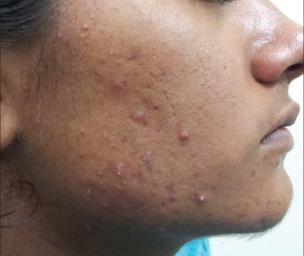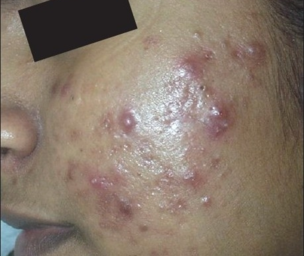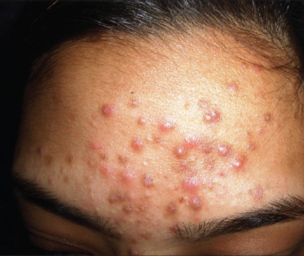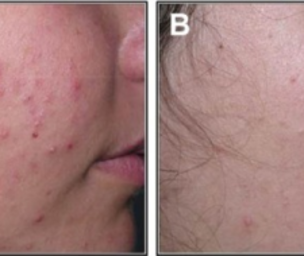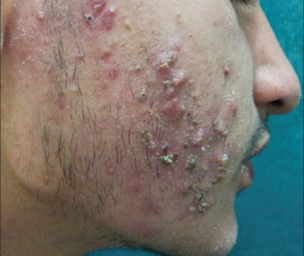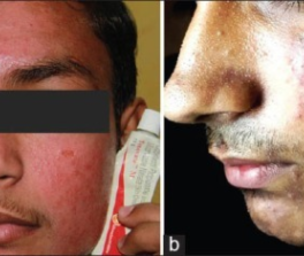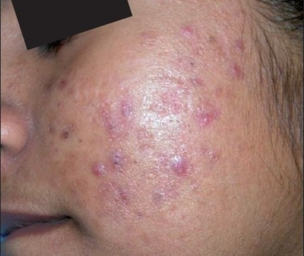How to Get Rid of Your Acne
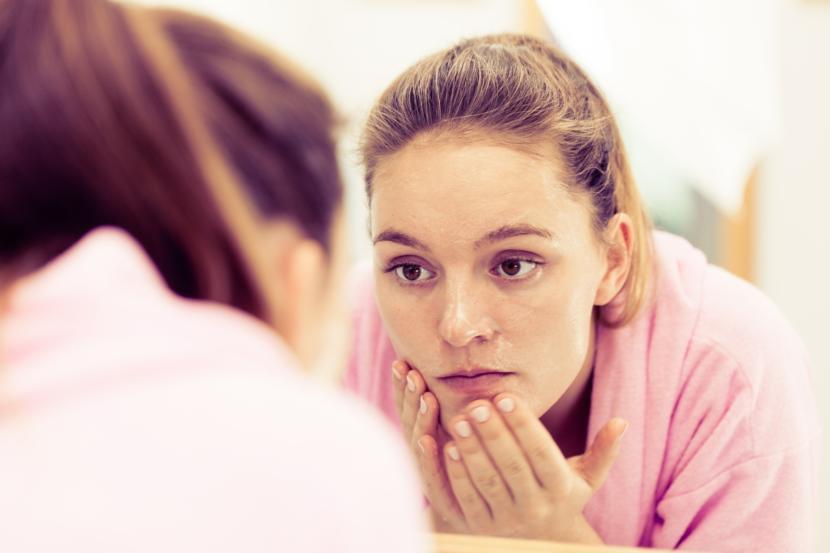
Acne is often treated as a common beauty problem, but the fact is that it is far beyond a superficial skin problem.
Although it is a very common skin problem and is not dangerous, it can sometimes end up leaving unsightly scars that can take a toll on confidence and self esteem. Acne is one of the most common issues faced by teenagers, and is referred to as Acne Vulgaris.
It is essentially a disease of the skin which affects the oil glands that are situated below the hair follicles. It usually occurs at the time when one hits puberty. This is the period when the oil glands known as the sebaceous glands begin to get active. These glands are stimulated by male hormones that are generated by the adrenal glands in both men and women.
The word acne is derived from the Greek word, acme, which means a point or a spot.
Causes of acne
The exact causes of acne are still unknown. Experts have often attributed the main cause of acne to be the rise of androgen levels in the body. Androgen is a particular type of hormone found in the human body that becomes activated at the time of adolescence. An increase in the androgen levels leads to a growth of oily glands under the skin.
When the glands become enlarged, they tend to secrete more oil or sebum. Excess sebum further breaks the walls in the pores that trigger growth of bacteria. There are studies that also indicate the growth of acne to be a genetic problem. There are a few medicines that contain lithium and androgen that could also trigger acne in some people. Using oily cosmetics could trigger acne in people who are prone to acne. Certain changes that are hormone-triggered, such as in pregnancy, could also result in acne. People who are susceptible to acne could have repeated episodes of acne infections that could keep recurring.
Types of acne
Whiteheads: Whiteheads are found deep under the skin and are very small in appearance.
Blackheads: Blackheads are black colored visible spots on the surface of the skin. Blackheads are often thought to be dirt, but they actually aren’t. The color comes from exposure to the air.
Papules: These are small pink colored bumps that appear on the skin surface.
Pustules: These are red colored bumps that are visible on the skin. They are normally filled with pus and could be painful.
Cysts: Cysts appear on the skin surface and are often painful pus-filled blisters. Cysts often end up causing scars.
Over-the-counter treatment for acne
The majority of over-the-counter products for acne contain the following active ingredients:
Benzoyl peroxide: This reduces acne by killing germs (bacteria) and slowing down the glands' production of oil. It also reduces inflammation and helps to unplug clogged pores.
Resorcinol: Resorcinol is a crystalline phenol that helps break down whiteheads and blackheads.
Salicylic acid: Salicylic acid helps break down whiteheads and blackheads. It is also effective in treating inflammation and swelling. Salicylic acid causes the epidermis (the outermost layer of skin) to shed skin more easily and prevents pores from becoming blocked. It also allows space for new cells to grow at the same time.
Sulfur: Sulfur has been used for centuries for treating acne. It helps breakdown blackheads and whiteheads.
Retinoids: Retinoids help unclog blocked pores. They are also known for reducing inflammation. Therefore, it is often used at the earlier stages of acne to help unblock clogged pores and to treat whiteheads, blackheads, and mildly inflamed spots. It has also been used widely to combat aging of the skin.
Azelaic acid: Azelaic acid is a great treatment for acne and rosacea. It strengthens cells that line the hair follicles, prevents oil eruptions and reduces the growth of bacteria. Azelaic acid also cleans up free radicals, which reduces inflammation. It is also useful for reducing acne spots.
Most of the above mentioned active ingredients are found in medications in the form of creams, gels, lotions, pads, and soaps. If you are using these topical medications for the first time, you may experience skin irritation, such as dryness, redness, and peeling. However, if this irritation persists, consult your doctor immediately.
Oral medications
Over-the-counter topical treatment works for occasional breakouts. When the acne is mild to severe, it becomes necessary to see your doctor for the right treatment for your skin type.
Some of the oral medications your dermatologist may prescribe you are:
- Antibiotics: Oral antibiotics work by reducing bacteria that contribute to the cause of acne. They also help clear inflamed acne spots and reduce surrounding skin inflammation. However, they have modest effect on unplugging clogged pores. So, if you only have blackheads and whiteheads, you are recommended to use a topical treatment that unblocks clogged pores.
For pimples and cystic acne caused due to bacterial infection, your doctor likely will recommend the combination of topical medications and oral antibiotics.
However, antibiotics have certain side effects, such as dizziness and an upset stomach. These medicines also increase your skin's sun sensitivity.
- Anti-androgen agent: If oral antibiotics don’t work, women and adolescent girls are often prescribed with the drug spironolactone (Aldactone). This medicine blocks the effect of androgen hormones on the sebaceous glands. Possible side effects include painful periods, breast tenderness, and the retention of potassium.
- Combined oral contraceptives: These medicines are useful in treating acne in adolescent girls and women. However, these drugs also come with certain side-effects such as breast tenderness, headache, nausea, weight gain and breakthrough bleeding. A serious potential side-effect is a slightly increased risk of blood clotting.
- Isotretinoin: This medicine is prescribed to people with the most severe acne. Isotretinoin is a strong drug that is recommended to people whose acne doesn't respond to other treatments. Although oral isotretinoin is very effective in treating acne, it also has potential side effects. The most potential side-effect includes ulcerative colitis (inflammation of the large intestine), severe birth defects and an increased risk of depression and suicide.
Apart from above-mentioned medications, the doctor may also suggest therapies such as light therapy, chemical peel, or a steroid injection to treat severe cases of acne.
Natural ways to treat acne
There are several home remedies that can help you treat acne naturally. First and foremost, maintaining a healthy lifestyle and good hygiene habits is very important. For people with an intense acne problem, there may be no choice but to resort to medications. In the case of mild acne it would be beneficial to try natural remedies that are safe and without any side effects. The natural remedies spoken about here should be practiced on a regular basis to achieve results and to keep the skin free from germs and other problems. Always speak to your doctor before starting any natural treatments.
- Natural cleansers: Instead of loading your skin with chemicals, it might be best to use natural cleansers like honey and apple cider vinegar. These are not only natural cleansers but also help in maintaining the right pH levels in your skin, which is important to control excess oil secretion.
- Natural toners: There are a number of toners available, but many of them are not natural. Using natural astringent toners like apple cider vinegar twice a day helps you keep your skin glowing.
- Natural masks: There are a number of natural ingredients available in your kitchen that could help you heal your skin naturally. Essential ingredients like yogurt, honey, cinnamon, coconut oil, and tea tree oil can help in controlling acne and keeping skin clean. Here are some masks for you to try to get rid of acne:
- Yogurt and honey mask: Mix about a tablespoon of organic honey with one tablespoon or homemade curd. Apply this mix to your face mainly around the acne-prone areas. Let the mask sit for about 10 minutes before washing off.
- Cinnamon and honey mask: Mix in the following ingredients: 2 tablespoons honey, 1 tablespoon virgin coconut oil and 1/2 spoon cinnamon powder. Mix well and apply over clean face. Avoid areas around the eye as cinnamon could irritate these delicate areas. The antibacterial properties in honey and cinnamon together make this a power-packed face mask for acne-prone skin.
- Gently exfoliate: Acne can be a result of dead skin and clogged pores that have not been scrubbed and cleaned. Exfoliation is an important process of maintaining skin hygiene so as to remove the dead skin and open up the clogged pores. There are a number of exfoliators available, but they stand the risk of containing chemicals and artificial ingredients that can further build up in your skin, causing irritation and acne. DIY homemade scrubs based with sugar or salt can help you achieve the same results at a cheaper price and in a much safe manner.
- Eat healthy: Eating fresh fruits, drinking enough water and eating freshly cooked homemade foods are secrets to healthy skin. Excessive toxins and a disturbed lifestyle lead to several hormonal imbalances in the body that could eventually result in problems like acne. A lack of sleep could also result in acne for a number of people. It is the body’s way of showing it is stressed.
- Probiotics: Probiotics like curd are filled with natural and good bacteria that help the body fight infections and bad germs. Probiotics can help maintain the immune system as well as help keep the digestive system clean.












